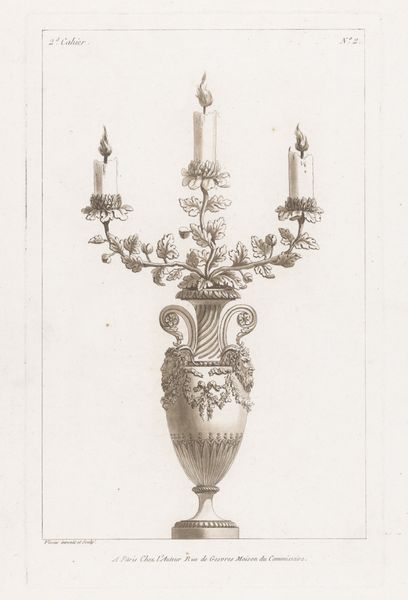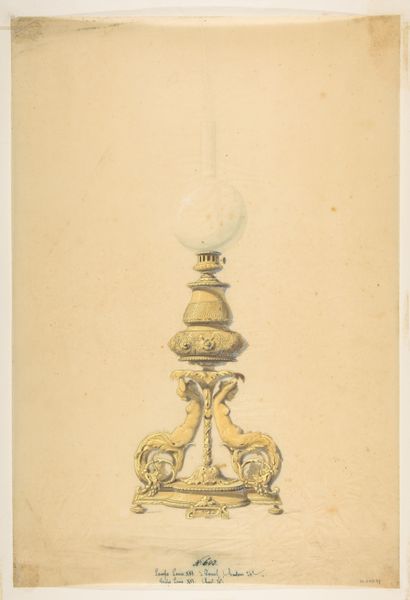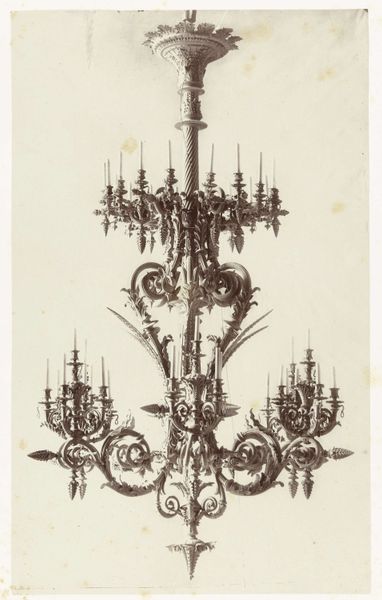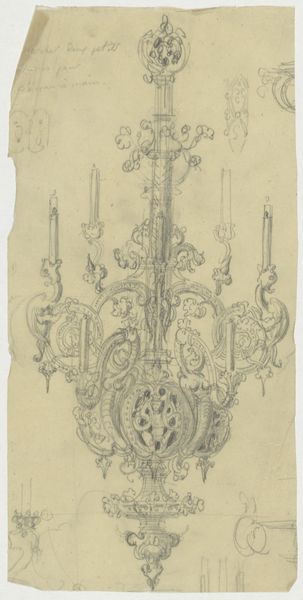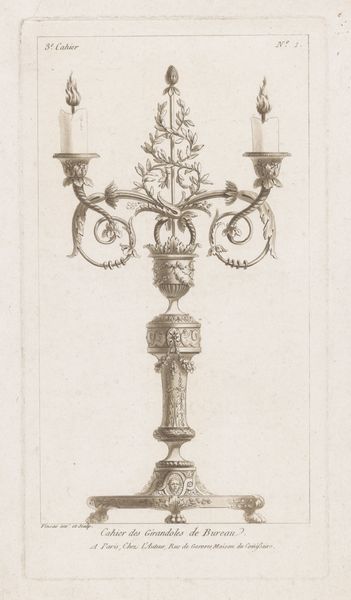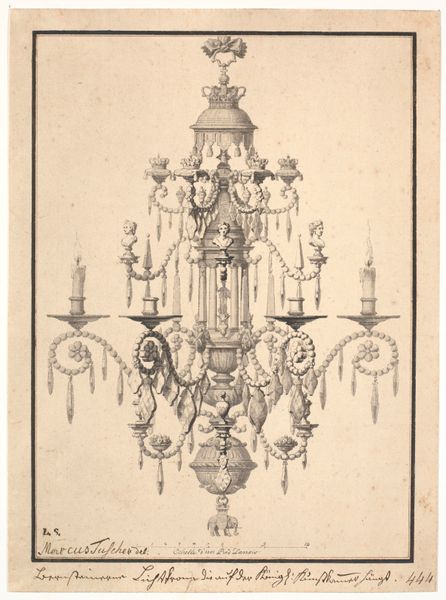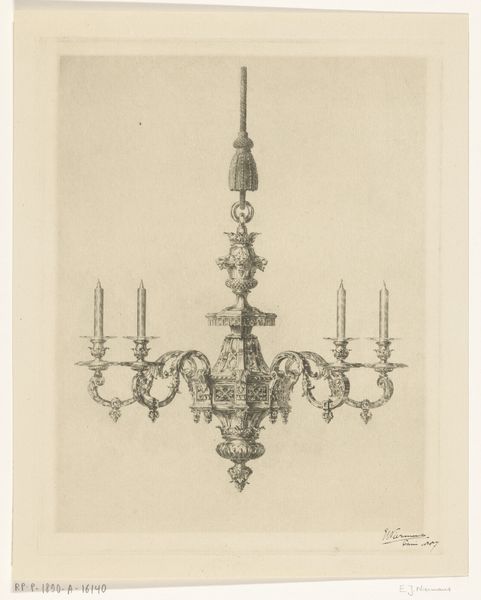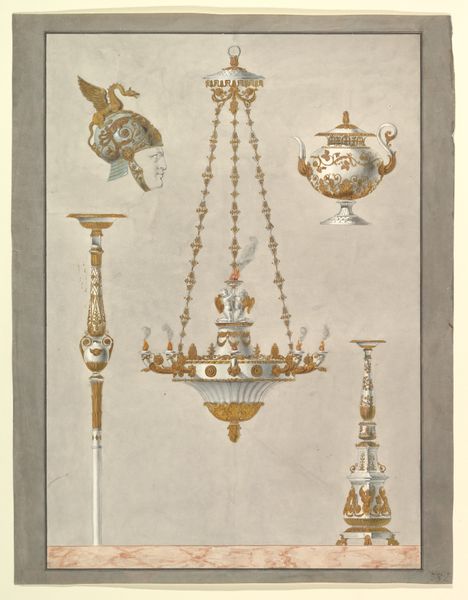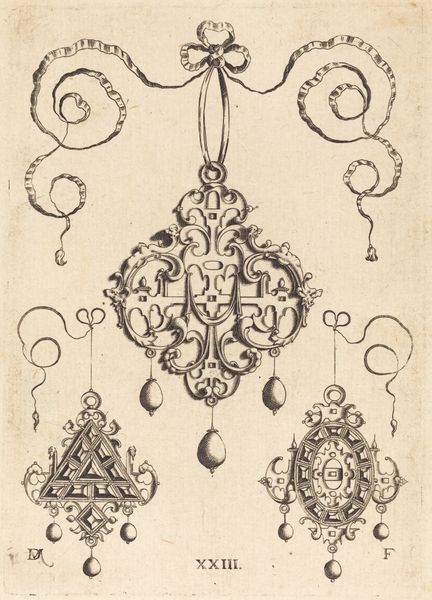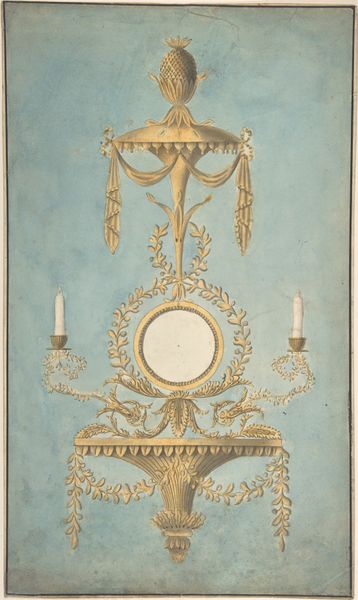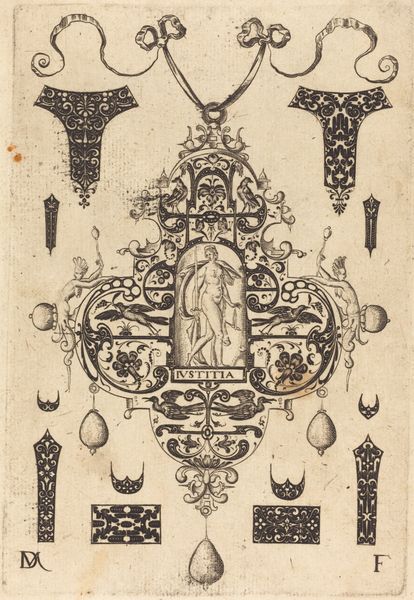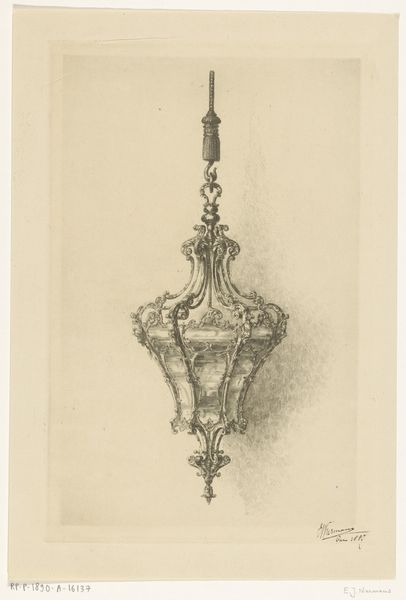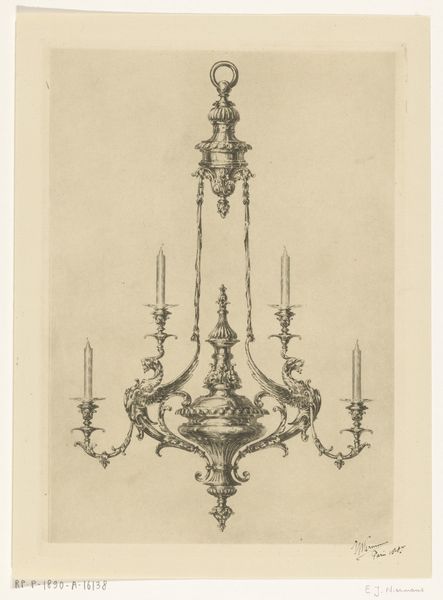
drawing, print, engraving
#
drawing
# print
#
geometric
#
line
#
decorative-art
#
engraving
Dimensions: plate: 15.6 x 10.5 cm (6 1/8 x 4 1/8 in.) sheet: 16.9 x 11.8 cm (6 5/8 x 4 5/8 in.)
Copyright: National Gallery of Art: CC0 1.0
This Chandelier was made in 1779 by Patrick Begbie as an etching in brown ink on paper. Etching is an indirect process: the artist protects selected areas of a metal plate with a waxy ground, then immerses the plate in acid. The acid bites into the exposed metal, creating lines that hold ink. The etched lines capture the intricacies of the chandelier’s design. Note the elaborate ornamentation: floral garlands, acanthus leaves, and classical motifs. The etching process itself, requiring meticulous preparation and precise execution, mirrors the skilled labor involved in crafting such a luxurious object. Chandeliers like this weren't just light sources; they were powerful symbols of wealth, status, and social aspirations. The very act of creating this etching speaks to the growing market for design documentation in the 18th century, as artisans sought to emulate and adapt the latest fashions for a burgeoning consumer class. Ultimately, this print reminds us that even seemingly simple images can reveal complex relationships between art, labor, and the social values embedded in material culture.
Comments
No comments
Be the first to comment and join the conversation on the ultimate creative platform.
